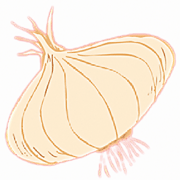
|
Volume 16, Issue 42 - October 16 - October 22, 2008
|
|
Columns |
 The Bay Gardener by Dr. Frank Gouin
The Bay Gardener by Dr. Frank GouinKnow Your Onions
Now’s the time to plant short-day onions

The girl of Roaring 1920s’ song fame who “Knows Her Onions” has more than common sense. She knows that onions are classified as short day, intermediate day and long day.
During the winter months, we have short days, meaning that daylight hours are less than 12. On September 22, we entered fall with 12 hours of daylight and 12 hours of dark. December 21, which introduces winter, brings us the least number of sunlight hours.
Knowing this information is important to the onion grower. A short-day onion variety will form a bulb only when the days are short; a long-day onion will only form a bulb when the days are long. Thus, if you intend to grow onions in your fall garden, plant only short-day varieties. Don’t select a neutral-day onion for fall planting because those varieties need 12 to 14 hours of daylight to form bulbs.
To form a bulb, the short-day onion must be growing when daylight hours are at their shortest point. If you wait until December to plant your short-day onions, you are not likely to harvest much of a crop.
You can begin planting short-day onions any time after the first of October. To grow onions successfully, your soil should have an abundant supply of organic matter. I generally like to amend it with one to two inches of compost prior to planting. The plants must become well established before the ground freezes. After the ground freezes, mulch the onions again one to two inches deep to help prevent the frost from pushing the onions out of the ground with repeated freezing and thawing.
As soon as the plants resume growth in the spring, apply a water-soluble fertilizer to stimulate early active growth. The nutrients from organic fertilizers are not available until the soil warms to above 65 degrees.
The Vidalia onions that you purchase in June are short-day onions grown in Vidalia County, Georgia. Only short-day onions grown in Vidalia County, Georgia, can be called Vidalia onions. To the best of my knowledge, Vidalia growers plant three varieties of short-day onions, all of them earning the prized title. Their mild, sweet taste is attributed to being grown in soils low in sulfur under those climatic conditions.